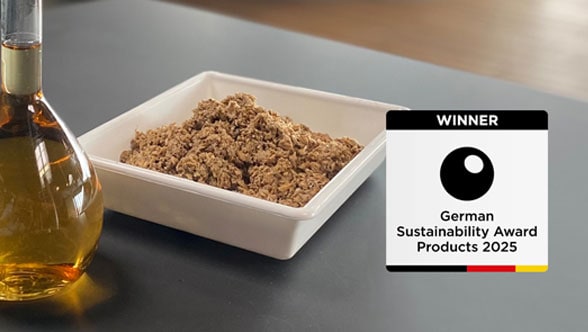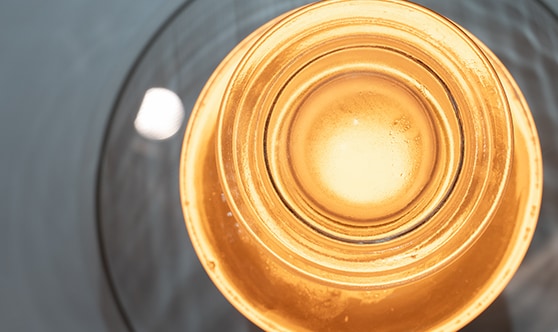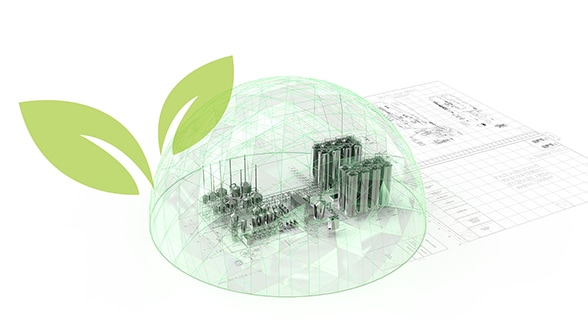Plant for biomass conversion
Like a phoenix from the ashes ...
Brewery residuals are by no means “waste” –they can be used for energy and fermented to create biogas, which is then converted into thermal and electrical energy in a combined heat and power plant. Breweries are therefore capable of providing their own energy supply in a self-sufficient and CO2-neutral manner if they choose to produce on the principle of the Steinecker Brewnomic.
However, the solely energy-based utilisation of biological residual materials is no longer undisputed, as they are also nutrient-rich and therefore high in value, for the food industry for example. Steinecker now wants to solve this problem with the Phoenix BMC* development project, a plant for biomass conversion: the residual materials are first converted into valuable raw materials, before the other remaining waste materials are used for energy.
The first module for the extraction of protein hydrolysate from brewing residues is already available as a product. Module 2 is currently in the test phase.
* BMC: Biomass Conversion
Energy recovery using brewery residuals
The initial problem
With conventional biogas plants, there are limits to the degree to which the solid brewery residuals, such as spent grains, malt dust and yeast, can be processed. In addition to the already poor usability of the residual materials, they also contain substances that have an inhibiting effect on the activity of the various microorganisms in a biogas plant.
The solution: Phoenix BMC
- Once these inhibitors are first removed from the brewery residuals, considerably less time is needed to use the residual materials with organisms effectively.
- The biogas plant can therefore be built considerably smaller and also cheaper.
Principle of the biomass conversion
Benefits to you
New raw materials as a source of income
- The protein hydrolysate and the fertiliser represent a new source of income for the brewery.
- Their resale makes a major contribution to the amortisation of the biomass conversion plant.
Energy-independent, CO2-neutral brewery.
- The increasing percentage of biogas reduces the need for fossil fuels.
- Using the corresponding modules from the Brewnomic modular system will make it possible to cover a brewery’s entire energy requirement.



